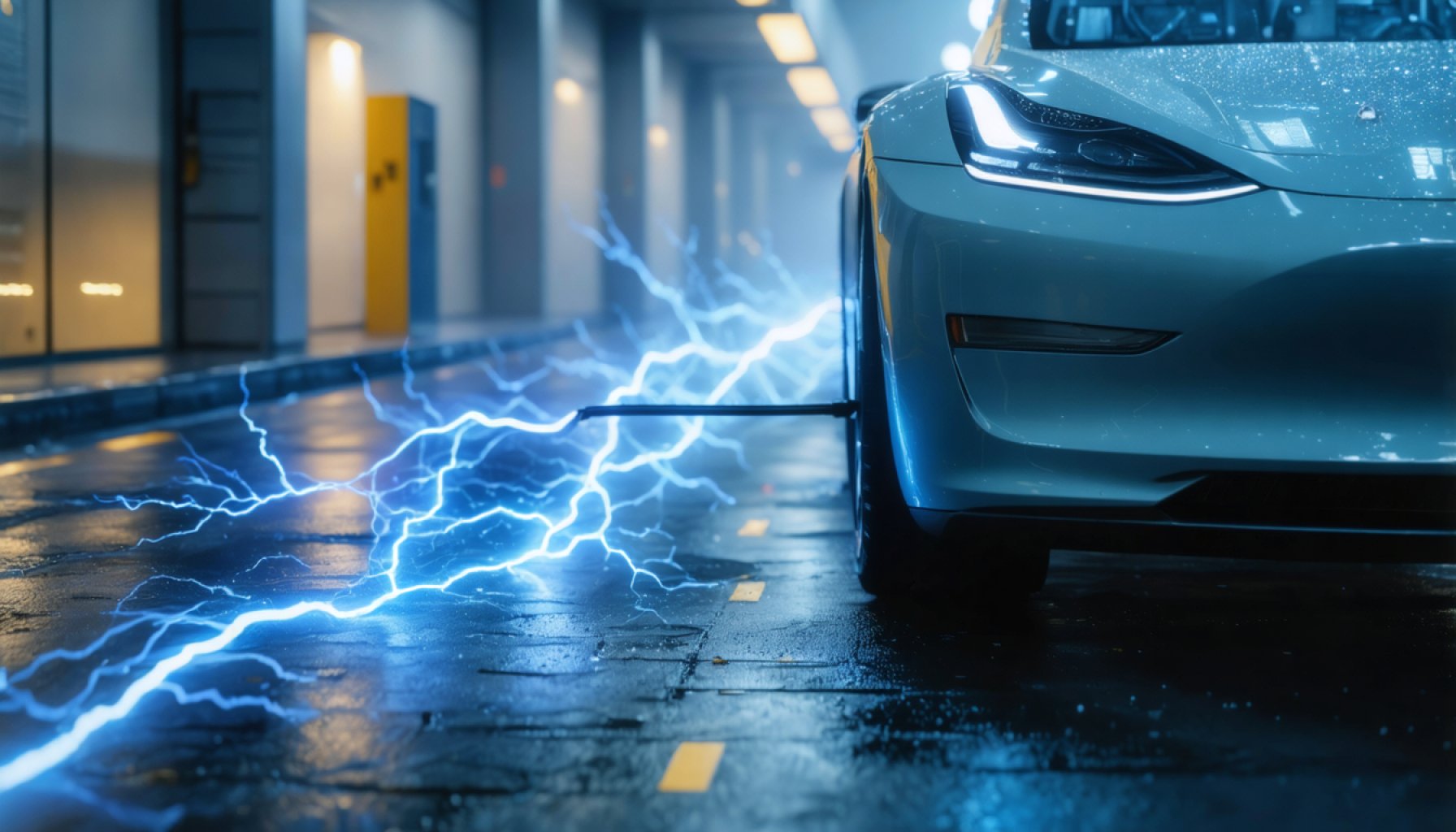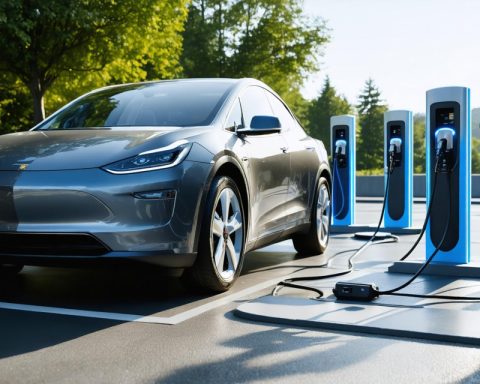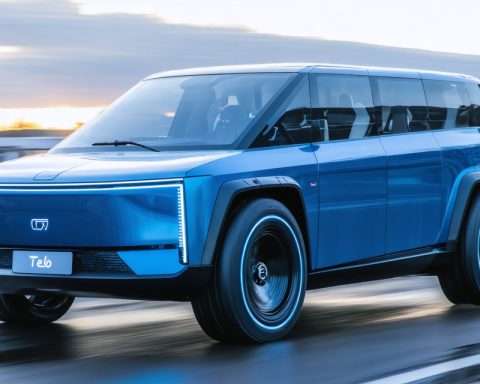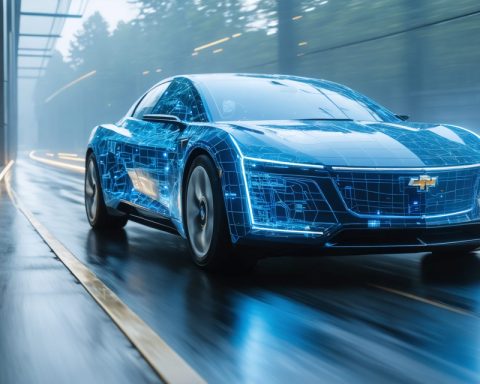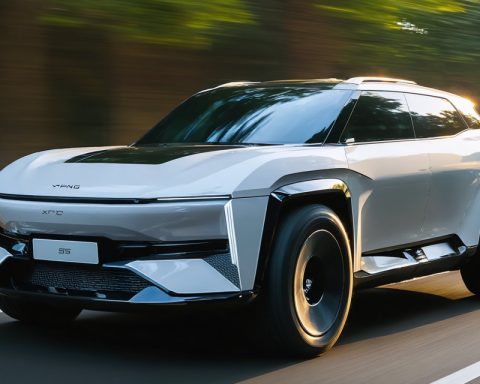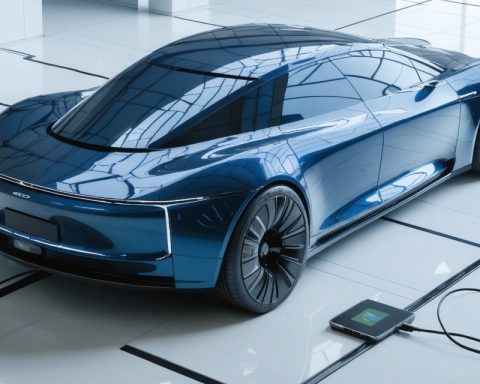- The global auto market surged by 25% in 2024, with electric vehicles (EVs) capturing nearly 20% of sales.
- In the U.S., a record 1.3 million EVs were sold, significantly outpacing gasoline-powered cars.
- Congress faces the challenge of solidifying the EV industry’s growth through supportive policies and tax credits.
- Manufacturing and consumer tax credits have driven $215 billion in investments, catalyzing economic growth and job creation.
- Georgia leads in EV and battery manufacturing, with $25.5 billion in investments and over 27,000 new jobs.
- Potential elimination of tax credits threatens a substantial decline in EV sales and industry expansion.
- China remains a strong competitor, dominating global EV sales and battery production.
- The U.S. must ensure its position as an innovation leader in the growing electric vehicle market.
A silent revolution sweeps across the globe, not with the rumble of engines but with the quiet whir of electric motors. In 2024, the worldwide auto market surged by 25%, with electric vehicles (EVs) seizing nearly 20% of car sales. This seismic shift is reshaping economies, creating a new landscape where the winners create not just cars but jobs and innovations.
In the United States, a record-breaking 1.3 million electric vehicles found new homes, outpacing the modest 2% rise in gasoline-powered cars. The electric tide is rising, buoyed by automakers introducing a kaleidoscope of EV models aiming to capture the imagination—and wallets—of consumers globally. Now, Congress stands at a crossroads with a pivotal role: to ensure this burgeoning industry roots itself firmly on American soil.
The symbiotic dance of manufacturing and consumer tax credits is at the heart of this transformation. These credits have unleashed a torrent of $215 billion in investments, ushering in a new era of manufacturing prowess and revitalizing local economies. Georgia, once known primarily for peaches and Southern charm, now wears the crown as the number one state for EV and battery manufacturing. Over the past two years, the state has attracted a staggering $25.5 billion in investments that have sprung to life with more than 27,000 new jobs, nurturing the potential of its rural communities.
In Bryan County, Hyundai’s colossal $6.3 billion EV and battery plant rises as a symbol of new industrial might, promising 3,400 jobs. The reverberations of this project ripple through the state, with an additional $2.7 billion flowing in from suppliers, translating to an anticipated 6,900 jobs—a testament to the transformative power of strategic investment.
Yet, a shadow looms. The lifeblood of this industry, the manufacturing and consumer tax credits, faces potential elimination. The Research from Princeton University’s REPEAT Project warns of a grim future should these credits vanish: a plummet in EV sales by 40% by decade’s end, and up to 8.3 million fewer EVs on American roads by 2030. This domino effect threatens to snuff out planned expansions and shutter existing facilities, casting doubt on America’s EV and battery manufacturing renaissance.
Geopolitical stakes accentuate the urgency. China, responsible for half of all global EV sales and 80% of the planet’s lithium-ion battery production, stands poised to capitalize should America falter. The evaporation of U.S. tax credits would hand Beijing a competitive edge, undermining America’s supply chain security and undercutting its workforce.
The road ahead demands action. Congress must fortify the nation’s auto industry, anchoring the U.S. as a bastion of innovation and production. As the electric vehicle race intensifies, it is not merely about keeping pace but overtaking—a sprint where incentives drive success and the winners write the future. Without the tax credits, America risks stalling just as its potential surges.
The American auto sector’s strength is not just in manufacturing capacity but in its ability to innovate, adapt, and compete globally. The time is now for a decisive charge into a future powered by electricity and innovation, ensuring that this renaissance is not ephemeral but the dawn of a sustained and thriving industry.
Why the Future of Electric Vehicles Hinges on Strategic Tax Incentives
Key Insights into the Electric Vehicle (EV) Revolution
The global automotive market is undergoing a fundamental transformation as electric vehicles (EVs) rapidly increase their market share. In 2024, EVs accounted for nearly 20% of all car sales, marking a global sales surge of 25%. In the U.S., 1.3 million EVs were sold, surpassing the modest growth of gasoline-powered cars. This shift is more than a trend; it’s reshaping economies, industries, and environmental strategies.
Critical Questions and Potential Implications
How Vital Are Tax Credits to the EV Industry?
Tax credits for both manufacturers and consumers have been instrumental in driving EV adoption. Over $215 billion in investments have been catalyzed by these incentives. Eliminating these credits could lead to a 40% decrease in EV sales, significantly impacting U.S. auto industry growth and employment rates. [Source: Princeton University’s REPEAT Project]
What’s at Stake Geopolitically?
China is a formidable competitor, dominating 50% of global EV sales and 80% of lithium-ion battery production. Without U.S. tax credits, China’s industry could further capitalize, jeopardizing America’s automotive and supply chain dominance.
Industry Trends and Future Prospects
1. Job Creation and Investment:
– Georgia has attracted $25.5 billion in investments for EV and battery manufacturing, generating over 27,000 jobs. Hyundai’s $6.3 billion plant in Bryan County is a standout project promising thousands of jobs.
2. Technological Advancements:
– Innovation in battery technology and infrastructure is crucial, with breakthroughs in battery efficiency and longevity poised to make EVs more accessible and appealing to consumers.
3. Sustainability and Environmental Impact:
– EVs offer significant environmental benefits, reducing greenhouse gas emissions. Further innovations are expected to enhance sustainability, including advancements in recycling and materials sourcing.
Real-World Use Cases
– Consumer Adoption:
As more models become available with longer ranges and competitive pricing, consumer adoption is projected to rise, further encouraged by potential state-level incentives and charging infrastructure expansion.
– Market Dynamics:
Companies that rapidly scale production and innovate in battery technology are likely to lead the pack, influencing supply chains and employment landscapes globally.
Challenges and Controversies
– Raw Material Sourcing:
The procurement of raw materials like lithium raises environmental and ethical concerns, requiring stringent regulations and sustainable practices.
– Infrastructure Build-Out:
A robust EV charging network is essential. Investments in public and private charging stations are critical to accommodate the increasing number of EVs on the road.
Actionable Recommendations
1. Advocate for Sustained Government Support:
Encourage policymakers to maintain and expand incentives for EV producers and buyers, which are vital for continued growth.
2. Focus on Innovation:
Invest in R&D for battery technology, charging solutions, and sustainable materials to stay competitive and environmentally responsible.
3. Expand Charging Infrastructure:
Push for enhanced charging networks in urban and rural areas to support broader adoption and daily use of EVs.
For more information and insights into EV developments, visit The New York Times and Reuters.
This growing influence of electric vehicles represents not just a shift in transportation but an opportunity to redefine how economies, employment, and environmental strategies converge for a sustainable future. Act now to be a part of the revolution.
